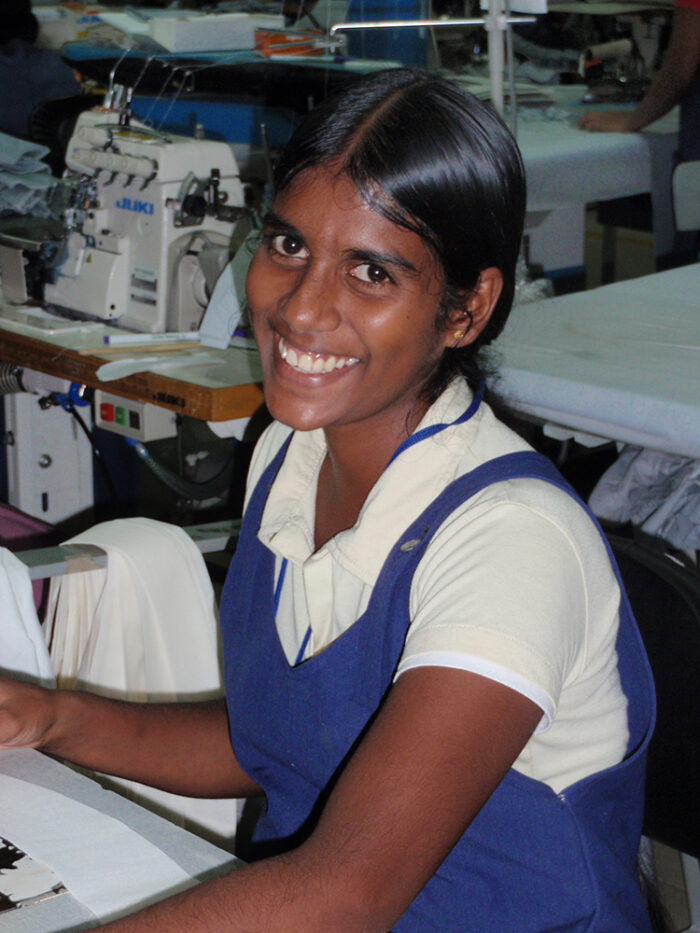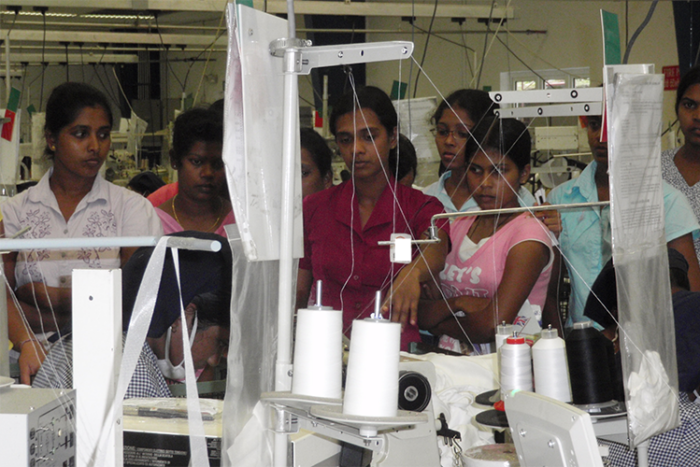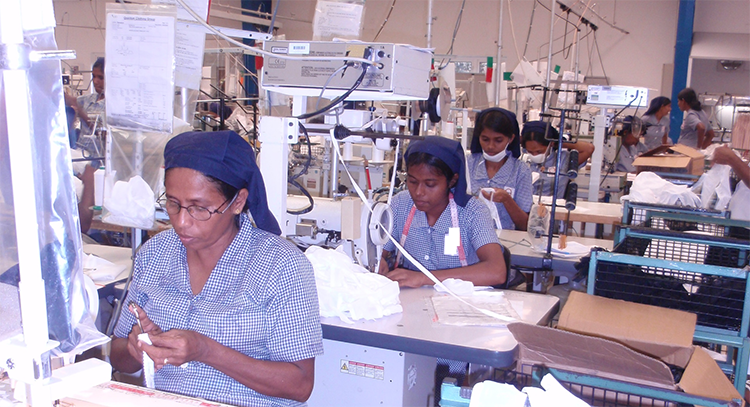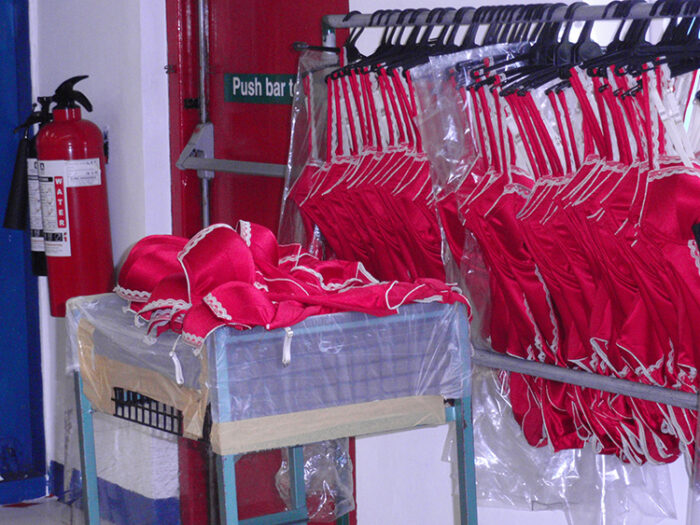Living Wages: The Achilles Heel of the Sri Lankan Garment Industry?
It is not often that the life of Beyoncé and academic researchers intertwine – the chances are even more remote, when the research site in question, Sri Lanka, often rightly avoids the negativity associated with the global supply chain. Media reports record how Beyoncé justly supports the feminist cause for gender equality in pay. Yet by her braving into the world of branded gym wear (Ivy Park) to support and inspire women, she was opening herself to media scrutiny about how empowered its workers may be. While the media scrutiny may be warranted, the media’s representation of Sri Lankan workers is a partial rendering that flattens the very labour voices these interventions claim to champion.
On 8 May 2016, The Sun on Sunday carried a news item with the headlines that “Sweatshop ‘slaves’ earning just 44p an hour making “empowering” Beyoncé clobber”. Not being a reader of tabloids, I came to know of it, when an inquiry came my way from Broadly, requesting for input for a piece that it was being put together. In the hope for a nuanced intervention to the early news foray –from the Sun to the Metro, I assented. In the conversation with Siri Kale, we overviewed positive attributes to Sri Lanka’s apparel sector, signaling that it is ability to do so is associated with multiple factors – from a highly educated labour force to high standards in building regulations to protective labour legislative framework. All features of state policies in the social development and labour legislation; facets often downplayed in an age of corporate social responsibility. We also talked about the Achilles heels of Sri Lankan apparels – the lack of living wages and the inability of most workers to freely associate and enter into collective bargaining (i.e. unionise).
In the eventual output that came out of Broadly, the positives of Sri Lankan apparels or the potentially enviable Sri Lankan context was edited out. Hence, there was only one direct quote registering how MAS, a supplier/producer of Ivy Parks, has fantastic factories, is attentive to the built space, and how it is usually considered to be top of the supplier base in Sri Lankan. Otherwise, with a vaguely problematic title, the emphasis was on the lack of living wages and unionisation.
The absence of a living wage and the impossibility of unionisation are two points emphasised earlier in a report that came out of an ESRC-funded research, although there made within a context. I also emphasised how the positive adherence to ethical trade regimes and Sri Lankan apparels ability to do so having much to do with historical labour struggles, labour legislative frameworks and state policies towards our social development fabric. The centrality of labour geographies in making capitalism, à la Andrew Herod, was emphasised to accentuate how labour has agency in shaping capitalist development processes.
This nuanced reading of Sri Lankan apparels was met with wrath by an important union in Sri Lanka, with a pro-union friendly journalist hounding me with local media interventions in a bid to vilify the research. This stance was presumably because it dented the union’s ability to portray Sri Lankan apparels through a black and white lens. Shades of grey in labour politics was a faux pas, as a UCU academic member I was to learn – in a somewhat harsh way in my local research setting. Almost four years later, the partial rendering of my views by Broadly led to a message from a senior manager at one of my research sites to question my stance. While this communication was not unfriendly, I still had to point to him that the two lapses I had noted are already in the report that also helped his factory achieve a higher certification. It, however, made me then dig deeper into how this story had developed in the media.
From the Guardian to the Independent to the Telegraph, the emphasis was on Sri Lankan workers earning abysmally low amounts per hour, their slavery and the ability for consumers to change all these woes of the supply chain – where, according to the Guardian, Beyoncé was not to be blamed. Holding Beyoncé personally responsible for inequities in uneven capitalist development and the supply chain is simplistic analysis. This is beyond doubt. Yet the fact that the media and campaigners alike continue to promote the idea that consumers can single-handedly change the global labour division and continue to flatten the voice of labour by reducing workers to a homogenous category or to slaves is equally naïve. It is a representation that misses the very labour agency or conditions of possibility that made a single woman worker articulate views on empowerment and the lack thereof in her labouring life.
Feminists, Ethel Brooks and Dina Siddiqui, have emphasised this point previously and yet it continues to evade the attention of media and campaigners. The fact that Sri Lankan labour get paid a monthly minimum wage negotiated through a tripartite Wages Ordinance Board and hence are not paid an hourly wage or indeed a piece rate system was wholly absent from almost all media interventions. The woman’s description of her deplorable (private) boarding conditions is then stretched to categorize her situation as akin to slave labour. The elasticity of campaigner interpretations would require a leap of faith for any intelligent and careful reader. Nowhere in the public domain do I find the worker saying that MAS was providing boarding and that her mobility was severely restricted. Features usually absent in the Sri Lankan apparel trade, partly because many do not provide factory-based boarding facilities and partly because workers would not tolerate factories where they were locked up.
What then of Sri Lankan apparel workers? In contrast to the blasé narratives we are provided with, the reality of Sri Lankan labour is more complex and nuanced. Sri Lankan apparel sector draws upon an important and impressive social development agenda adopted by the Sri Lanka state for decades – giving the industry a highly skilled and educated labour force. It also draws upon relatively strong labour legislation, an outcome of labour struggles and movements from yesteryears, which thwarts the worst excesses of uneven capitalist development. These are facets that enable Sri Lankan apparels to make bold claims around producing “garments without guilt”; child labour, for instance, is non-existent in the industry because of state-provided free education and our legislation requires children to be in school until 16 years of age. Yet it also remains the case that with the weakening power of unions and gradual erosion to protective labour legislation, the risks for Sri Lankan apparels to fall off its cultivated mantle is real. The neglect of state protection towards labour given its absence of regulating private boarding houses or extending weekly overtime hours, equally matter in process of uneven capitalist development. Equally, so long employers have a stranglehold on the Wages Ordinance Board, worker wage increments rarely, if ever, have kept pace with inflation. The absence of a living wage then is likely to remain the Achilles heel of the Sri Lankan garment industry – making it potentially vulnerable to all other wild accusations, whether these hold water or not.










